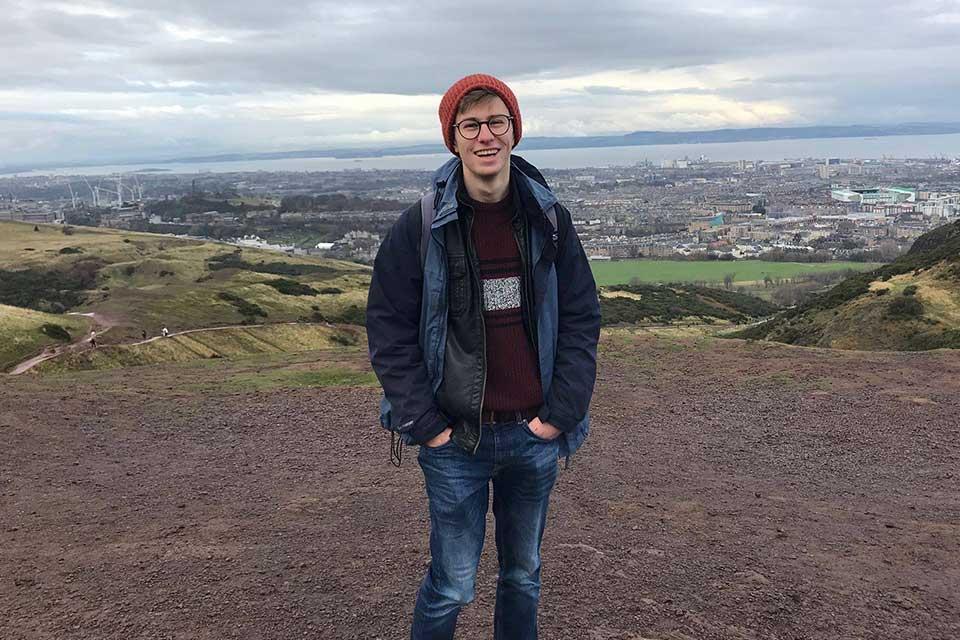We work among extraordinary people doing extraordinary things; get to know some of them by reading these quick-fire interviews.
Name: Andrew Williams
Job title: DPhil student in climate physics
What are you currently working on?
I am currently studying how the tropical atmosphere responds to external forcing, particularly how large-scale patterns of wind and cloudiness respond to changes in sea-surface temperature. One of the major things we have learnt over the past two decades is that tropical clouds are among the most important controls on Earth’s climate and its response to global warming. However, there are still so many basic aspects of their behaviour which we don’t understand. For example, most clouds in the tropics produce rainfall to some degree, but the impact of rainfall on their dynamics is poorly understood because it alters both the clouds themselves, and the large-scale circulation that they form in.
It is a fascinating problem to work on because theories which work well in the midlatitudes fail spectacularly when applied to the tropical atmosphere, largely because of the strong coupling between clouds and circulation. It means that there is a lot of space to develop new ideas and test them in idealised climate models or against observations.
Describe a typical day
Typically, I arrive at the department around 9-10am and spend an hour or two writing code, babysitting climate model simulations and checking my emails. My office mates and I also religiously observe an 11:30am coffee break, which, being dangerously close to midday, often turns into an early lunch.
The afternoons are then taken up by more coding, writing notes, reading papers and having Zoom meetings with my collaborators in different countries. One of the small upsides to the pandemic was that it made it easier to establish virtual collaborations with people I normally wouldn’t have reached out too – every cloud, eh?
During conference season, I also spend a lot of time preparing presentations. I really enjoy giving talks on my research, and at both the AGU Fall Meeting 2021 and the EGU General Assembly 2022 meetings I was awarded the ‘Outstanding Student Presentation Award’, which was a great honour and a real confidence boost.
It can be hard to maintain a work-life balance in academia, but I try to keep the evenings free for sports, cooking or just chilling with my partner and our cat, Cleo.
If you had an entire day at your disposal (not at work), what would be your ideal way to spend it?
I enjoy cycling and have done a few long-distance cycle tours in the UK and France over the years. Some of my favourite memories have been of cycling through these beautiful landscapes with friends, and I would revisit any of those days again in a heartbeat.
What is your favourite place in Oxford?
Port Meadow on a sunny day, followed by The Perch, which has (undeniably) the best beer garden in the world.
What discovery would you like to see in your lifetime?
In my opinion, the most fascinating aspect of studying climate science is that it involves interactions between lots of branches of physics which we understand reasonably well in isolation – namely thermodynamics, radiative transfer and fluid dynamics – but whose behaviour becomes infinitely more complicated when they are allowed to interact. One of the challenges we face in studying climate and climate change is understanding how these fundamental “building blocks” relate to the emergent properties of Earth’s climate.
For example, there has been a lot of exciting work recently showing how a deeper understanding of radiative transfer can explain why climate models predict that global-mean precipitation will respond rather slowly to climate change, even though the changes may be large regionally. This type of work is super important because linking the behaviour of climate to fundamental physics gives us a more confident picture of how it will respond to warming.
I would love to see more work which links the complex behaviour of the climate system to the “building blocks” of physics which we learn as university students. This gives us a richer understanding of the problem, makes our work easier to communicate to others, and helps to build confidence in our projections of future climate impacts.

